William C Schneider
age ~70
from Los Altos, CA
- Also known as:
-
- William Clayton Schneider
- William Te Schneider
- William Cynthia Schneider
- William E Schneider
- William Sylvia Schneider
- Williams Cy Schneider
- Williams C Schneider
- William C Scheider
- Willi Schneider
- Schneider Williams
William Schneider Phones & Addresses
- Los Altos, CA
- Copperopolis, CA
- Stockton, CA
- Mountain View, CA
- Walnut Creek, CA
- Danville, CA
- San Carlos, CA
- Fremont, CA
- San Francisco, CA
- Calabasas, CA
- Westerville, OH
- 155 Santa Rosa Ave, Mountain View, CA 94043
Work
-
Position:Professional/Technical
Education
-
Degree:Graduate or professional degree
Lawyers & Attorneys

William Patrick Schneider, Walnut Creek CA - Lawyer
view sourceAddress:
Law Offices of John A. Biard
215 Lennon Ln Ste 200, Walnut Creek, CA 94598
9259454151 (Office)
215 Lennon Ln Ste 200, Walnut Creek, CA 94598
9259454151 (Office)
Licenses:
California - Active 1980
Education:
University of California - Berkeley
University of San Francisco School of Law
University of San Francisco School of Law
Name / Title
Company / Classification
Phones & Addresses
President
May Day Books
Used Merchandise Stores
Used Merchandise Stores
31570 Page Mill Rd, Los Altos, CA 94022
Website: maydaybooks.com
Website: maydaybooks.com
COO
Woodside Tennis Shop
Architectural Services
Architectural Services
3056 Woodside Road, Redwood City, CA 94062
President
Bay Area Custom Pools Inc
Swimming Pool Contractors
Swimming Pool Contractors
45461 Fremont Blvd, Fremont, CA 94538
5106511881
5106511881
Owner
Schneider Enterprises
Residential Construction
Residential Construction
8769 Live Oak Rd, Wilton, CA 95693
PO Box 187, Wilton, CA 95693
8763 Live Oak Rd, Wilton, CA 95693
9166878513
PO Box 187, Wilton, CA 95693
8763 Live Oak Rd, Wilton, CA 95693
9166878513
President
WILLIAM M. SCHNEIDER, D.D.S., A DENTAL CORPORATION
1855 San Miguel Dr #31, Walnut Creek, CA 94596
Manager, Owner
Schneider & Schneider
Dentist's Office
Dentist's Office
1855 San Miguel Dr, Walnut Creek, CA 94596
Information Technology Manager
Mt. Diablo Unified School District
Public Elementary or Secondary School
Public Elementary or Secondary School
1936 Carlotta Dr, Concord, CA 94519
9256828000
9256828000
Owner, Senior Corporate Officer, President
May Day Books
Retail · Ret Books · Used Merchandise Stores · Book Dealers-Used & Rare
Retail · Ret Books · Used Merchandise Stores · Book Dealers-Used & Rare
31570 Page Ml Rd, Los Altos Hills, CA 94022
6509416707
6509416707
Us Patents
-
Humanized Immunoglobulins
view source -
US Patent:20030229208, Dec 11, 2003
-
Filed:Mar 13, 2003
-
Appl. No.:10/389155
-
Inventors:Cary Queen - Los Altos CA, US
Man Co - Cupertino CA, US
William Schneider - Mountain View CA, US
Nicholas Landolfi - Milpitas CA, US
Kathleen Coelingh - San Francisco CA, US
Harold Selick - Belmont CA, US -
Assignee:Protein Design Labs, Inc. - Fremont CA
-
International Classification:G01N033/53
G06F019/00
G01N033/48
G01N033/50
C07K016/18 -
US Classification:530/388150, 435/007100, 702/019000
-
Abstract:Novel methods for producing, and compositions of, humanized immunoglobulins having one or more complementarity determining regions (CDR's) and possible additional amino acids from a donor immunoglobulin and a framework region from an accepting human immunoglobulin are provided. Each humanized immunoglobulin chain will usually comprise, in addition to the CDR's, amino acids from the donor immunoglobulin framework that are, e.g., capable of interacting with the CDR's to effect binding affinity, such as one or more amino acids which are immediately adjacent to a CDR in the donor immunoglobulin or those within about about 3 as predicted by molecular modeling. The heavy and light chains may each be designed by using any one or all of various position criteria. When combined into an intact antibody, the humanized immunoglobulins of the present invention will be substantially non-immunogenic in humans and retain substantially the same affinity as the donor immunoglobulin to the antigen, such as a protein or other compound containing an epitope.
-
Humanized Immunoglobulins
view source -
US Patent:20040049014, Mar 11, 2004
-
Filed:Mar 13, 2003
-
Appl. No.:10/389417
-
Inventors:Cary Queen - Los Altos CA, US
Man Co - Cupertino CA, US
William Schneider - Mountain View CA, US
Nicholas Landolfi - Milpitas CA, US
Kathleen Coelingh - San Francisco CA, US
Harold Selick - Belmont CA, US -
Assignee:Protein Design Labs, Inc. - Fremont CA
-
International Classification:C07K016/44
G06G007/48
G06G007/58 -
US Classification:530/388150, 703/011000
-
Abstract:Novel methods for producing, and compositions of, humanized immunoglobulins having one or more complementarity determining regions (CDR's) and possible additional amino acids from a donor immunoglobulin and a framework region from an accepting human immunoglobulin are provided. Each humanized immunoglobulin chain will usually comprise, in addition to the CDR's, amino acids from the donor immunoglobulin framework that are, e.g., capable of interacting with the CDR's to effect binding affinity, such as one or more amino acids which are immediately adjacent to a CDR in the donor immunoglobulin or those within about about 3 as predicted by molecular modeling. The heavy and light chains may each be designed by using any one or all of various position criteria. When combined into an intact antibody, the humanized immunoglobulins of the present invention will be substantially non-immunogenic in humans and retain substantially the same affinity as the donor immunoglobulin to the antigen, such as a protein or other compound containing an epitope.
-
Humanized Immunoglobulins
view source -
US Patent:20040058414, Mar 25, 2004
-
Filed:May 30, 2003
-
Appl. No.:10/452357
-
Inventors:Cary Queen - Los Altos CA, US
Man Sung Co - Cupertino CA, US
William Schneider - Mountain View CA, US
Nicholas Landolfi - Milpitas CA, US
Kathleen Coelingh - San Francisco CA, US
Harold Selick - Belmont CA, US -
International Classification:G06F019/00
G01N033/48
G01N033/50
C07K016/44 -
US Classification:435/069100, 435/326000, 435/320100, 530/388150, 702/019000
-
Abstract:Novel methods for producing, and compositions of, humanized immunoglobulins having one or more complementarity determining regions (CDR's) and possible additional amino acids from a donor immunoglobulin and a framework region from an accepting human immunoglobulin are provided. Each humanized immunoglobulin chain will usually comprise, in addition to the CDR's, amino acids from the donor immunoglobulin framework that are, e.g., capable of interacting with the CDR's to effect binding affinity, such as one or more amino acids which are immediately adjacent to a CDR in the donor immunoglobulin or those within about about 3 as predicted by molecular modeling. The heavy and light chains may each be designed by using any one or all of various position criteria. When combined into an intact antibody, the humanized immunoglobulins of the present invention will be substantially non-immunogenic in humans and retain substantially the same affinity as the donor immunoglobulin to the antigen, such as a protein or other compound containing an epitope.
-
Humanized Immunoglobulins
view source -
US Patent:20080160018, Jul 3, 2008
-
Filed:Nov 20, 2006
-
Appl. No.:11/603273
-
Inventors:Cary L. Queen - Los Altos CA, US
Man Sung Co - Cupertino CA, US
William P. Schneider - Mountain View CA, US
Nicholas F. Landolfi - Milpitas CA, US
Kathleen L. Coelingh - San Francisco CA, US
Harold E. Selick - Belmont CA, US -
Assignee:PDL BioPharma, Inc. - Fremont CA
-
International Classification:A61K 39/395
C07K 16/28
A61P 19/02
A61P 3/10 -
US Classification:4241331, 5303873
-
Abstract:Novel methods for producing, and compositions of, humanized immunoglobulins having one or more complementarity determining regions (CDR's) and possible additional amino acids from a donor immunoglobulin and a framework region from an accepting human immunoglobulin are provided. Each humanized immunoglobulin chain will usually comprise, in addition to the CDR's, amino acids from the donor immunoglobulin framework that are, e.g., capable of interacting with the CDR's to effect binding affinity, such as one or more amino acids which are immediately adjacent to a CDR in the donor immunoglobulin or those within about 3 Å as predicted by molecular modeling. The heavy and light chains may each be designed by using any one or all of various position criteria. When combined into an intact antibody, the humanized immunoglobulins of the present invention will be substantially non-immunogenic in humans and retain substantially the same affinity as the donor immunoglobulin to the antigen, such as a protein or other compound containing an epitope.
-
Polynucleotides Encoding Improved Humanized Immunoglobulins
view source -
US Patent:56937610, Dec 2, 1997
-
Filed:Jun 7, 1995
-
Appl. No.:8/474040
-
Inventors:Cary L. Queen - Los Altos CA
William P. Schneider - Mountain View CA
Harold E. Selick - Belmont CA -
Assignee:Protein Design Labs, Inc. - Mountain View CA
-
International Classification:C07H 2104
-
US Classification:536 2353
-
Abstract:Novel methods for producing, and compositions of, humanized immunoglobulins having one or more complementarity determining regions (CDR's) and possible additional amino acids from a donor immunoglobulin and a framework region from an accepting human immunoglobulin are provided. Each humanized immunoglobulin chain will usually comprise, in addition to the CDR's, amino acids from the donor immunoglobulin framework that are, e. g. , capable of interacting with the CDR's to effect binding affinity, such as one or more amino acids which are immediately adjacent to a CDR in the donor immunoglobulin or those within about about 3. ANG. as predicted by molecular modeling. The heavy and light chains may each be designed by using any one or all of various position criteria. When combined into an intact antibody, the humanized immunoglobulins of the present invention will be substantially non-immunogenic in humans and retain substantially the same affinity as the donor immunoglobulin to the antigen, such as a protein or other compound containing an epitope.
-
Fas Ligand Fusion Proteins And Their Uses
view source -
US Patent:60463104, Apr 4, 2000
-
Filed:Mar 11, 1997
-
Appl. No.:8/815190
-
Inventors:Cary L. Queen - Los Altos CA
William P. Schneider - Los Altos CA
Maximiliano Vasquez - Palo Alto CA -
Assignee:Protein Design Labs., Inc. - Fremont CA
-
International Classification:C07K 1600
-
US Classification:5303917
-
Abstract:Fas ligand fusion proteins comprising a polypeptide capable of specifically binding an antigen or a cell surface marker are prepared employing recombinant DNA technology for use in, e. g. , treatment of autoimmune disorders.
-
Method For Protecting A Semiconductor Device With A Superconductive Line
view source -
US Patent:56441436, Jul 1, 1997
-
Filed:May 30, 1995
-
Appl. No.:8/454542
-
Inventors:Michael D. Rostoker - Boulder Creek CA
Mark Schneider - San Jose CA
Nicholas F. Pasch - Pacifica CA
Abraham Yee - Santa Clara CA
William C. Schneider - Mountain View CA -
Assignee:LSI Logic Corporation - Milpitas CA
-
International Classification:H01L 2906
H01L 3900 -
US Classification:257 30
-
Abstract:Various techniques for forming superconductive lines are described whereby superconductive lines can be formed by stamping, etching, polishing, or by rendering selected areas of a superconductive film (layer) non-superconductive. The superconductive material can be "perfected" (or optimized) after it is formed into lines (traces). In one embodiment, trenches are etched in a substrate, the trenches are filled with superconductive material, and any excess superconductive material overfilling the trenches is removed, such as by polishing. In another embodiment, superconductive lines are formed by rendering selected areas of a superconductive layer (i. e. , areas other than the desired superconductive lines) non-superconductive by "damaging" the superconductive material by laser beam heating, or by ion implantation. Superconductive lines formed according to the invention can be used to protect semiconductor devices (e. g. , transistor structures) from over-current or overheating conditions such as those caused by CMOS latch-up.
-
Humanized Immunoglobulins
view source -
US Patent:56937628, Dec 2, 1997
-
Filed:Jun 7, 1995
-
Appl. No.:8/487200
-
Inventors:Cary L. Queen - Los Altos CA
Man Sung Co - Cupertino CA
William P. Schneider - Mountain View CA
Nicholas F. Landolfi - Milpitas CA
Kathleen L. Coelingh - San Francisco CA
Harold E. Selick - Belmont CA -
Assignee:Protein Design Labs, Inc. - Mountain View CA
-
International Classification:A61K 39395
-
US Classification:5303873
-
Abstract:Novel methods for producing, and compositions of, humanized immunoglobulins having one or more complementarity determining regions (CDR's) and possible additional amino acids from a donor immunoglobulin and a framework region from an accepting human immunoglobulin are provided. Each humanized immunoglobulin chain will usually comprise, in addition to the CDR's, amino acids from the donor immunoglobulin framework that are, e. g. , capable of interacting with the CDR's to effect binding affinity, such as one or more amino acids which are immediately adjacent to a CDR in the donor immunoglobulin or those within about about 3. ANG. as predicted by molecular modeling. The heavy and light chains may each be designed by using any one or all of various position criteria. When combined into an intact antibody, the humanized immunoglobulins of the present invention will be substantially non-immunogenic in humans and retain substantially the same affinity as the donor immunoglobulin to the antigen, such as a protein or other compound containing an epitope.
Medicine Doctors

Dr. William Schneider, Walnut Creek CA - DDS (Doctor of Dental Surgery)
view sourceSpecialties:
Dentistry
Address:
1855 San Miguel Dr, Walnut Creek, CA 94596
8557255394 (Phone)
8557255394 (Phone)
Procedures:
amalgam (silver) dental fillings
Composite (Tooth-Colored) Dental Fillings
Dental Bonding
Dental Bridges
Dental Crowns
Dental Implants (Restoration)
Dental Inlays
Dental Onlays
denture repair
Dentures (Upper and Lower)
Diagnodent
Digital Xray (Cdr)
Gingivitis
Nobel Teeth In an Hourtm
Opalescence Teeth Whitening
partial dentures
Porcelain Dental Veneers
Root Planing
Scaling
Simple Tooth Extractions
State-Of-The-Art Equipment
Teeth Whitening
Wheelchair Access Requirements
Composite (Tooth-Colored) Dental Fillings
Dental Bonding
Dental Bridges
Dental Crowns
Dental Implants (Restoration)
Dental Inlays
Dental Onlays
denture repair
Dentures (Upper and Lower)
Diagnodent
Digital Xray (Cdr)
Gingivitis
Nobel Teeth In an Hourtm
Opalescence Teeth Whitening
partial dentures
Porcelain Dental Veneers
Root Planing
Scaling
Simple Tooth Extractions
State-Of-The-Art Equipment
Teeth Whitening
Wheelchair Access Requirements
Conditions:
Gingivitis
Languages:
English
Philosophy:
Our patients are our family. Our caring staff provides gentle care and is great with fearful patients and children. We also provide amenities like headphones for your comfort.
Education:
Medical School
University Of Minnesota
Graduated: 1989
University Of Minnesota
Graduated: 1989

William O Schneider, San Jose CA
view sourceSpecialties:
Counseling
Address:
102 S 11Th St, San Jose, CA 95112
4089985191 (Phone), 4082791930 (Fax)
4089985191 (Phone), 4082791930 (Fax)
Languages:
English
Googleplus

William Schneider
Education:
Swarthmore College - Engineering, Park School of Baltimore
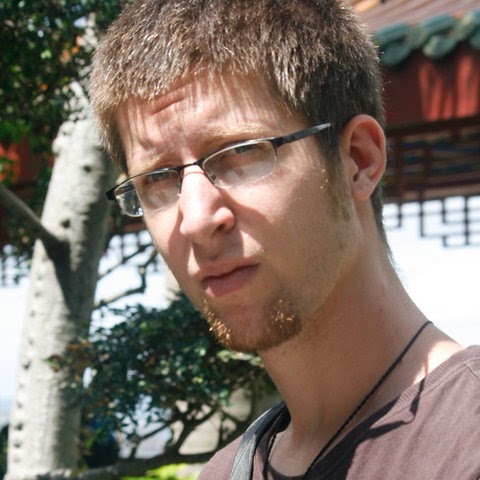
William Schneider
Education:
Gladstone HIgh
Relationship:
In_a_relationship
About:
Im a old man that has a wonderful group of friends and a beautiful gf!
Bragging Rights:
Been to China twice.

William Schneider (Whs2003)
Work:
StudentUniverse - Student

William Schneider
Work:
Telefónica
Tagline:
Si no puedes con el enemigo..... COMPRALO!!!

William Schneider
Education:
Wesleyan School

William Schneider
Education:
Escola professor antonio carneiro leão

William Schneider

William Schneider
Youtube
Myspace

William Schneider
view sourceLocality:
Los Angeles / Beverly Hills, California
Gender:
Male
Birthday:
1940

William Schneider
view source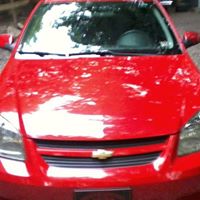
William Schneider Jr.
view source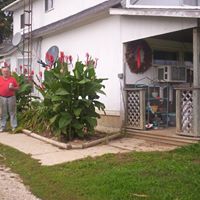
William Butch Schneider
view source
William Schneider
view source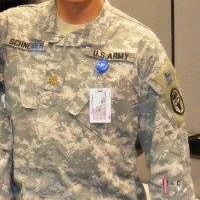
William Schneider
view source
Kyle William Schneider
view source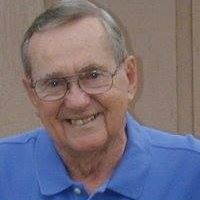
William E. Schneider
view source
William E Schneider
view source
James William Schneider
view sourceFlickr
News

Ex-Pentagon officials have doubts about billion-dollar JEDI cloud contract
view source- Though they showed dismay for the current contract as it stands, Stenbit, Bryen and moderator William Schneider, a senior fellow with Hudson, all seemed to agree that a major migration to the cloud is necessary for DOD it just needs to do more research before rushing into the move.
- Date: Apr 14, 2018
- Category: U.S.
- Source: Google

Bigelow Launching New Company to Sell Private Space Stations
view source- obert Bigelow read about an experimental NASA idea called TransHAB. An inflatable habitat could be launched into space in a collapsed form, and " once in orbit, where the acceleration and vibration loads are zero, it would be inflated to the required volume," according to developer William Schneider.
- Date: Feb 21, 2018
- Category: Science
- Source: Google

HIV May Have Emerged in Congo in 1920s: Study
view source- William Schneider, a professor who studies the history of medicine at Indiana University-Purdue University Indianapolis, praised the study for providing "a fascinating and helpful framework" to understand the origins of HIV/AIDS. Schneider is part of a team of historians and anthropologists explorin
- Date: Oct 02, 2014
- Category: Health
- Source: Google

Report: State Prescription Monitoring Programs Falling Short
view source- The research arrives at a timely moment for policy makers in Maine. For months, a task force, appointed by Attorney General William Schneider, has been looking at the different tools the state is using to battle the pain pill epidemic here.
- Date: Sep 20, 2012
- Category: Health
- Source: Google

As Ryan Takes The Stage, He Gives Hope To Republicans, Democrats Alike
view source- "Now everyone is talking about Paul Ryan, his budget and Medicare that's not what Republicans want to be talking about," says William Schneider, a public policy professor at George Mason University. "The Republican campaign should be about the economy and [President] Obama's job performance, perio
- Date: Aug 29, 2012
- Category: U.S.
- Source: Google
Plaxo

William Schneider
view sourceApple River Illinois
Get Report for William C Schneider from Los Altos, CA, age ~70

















